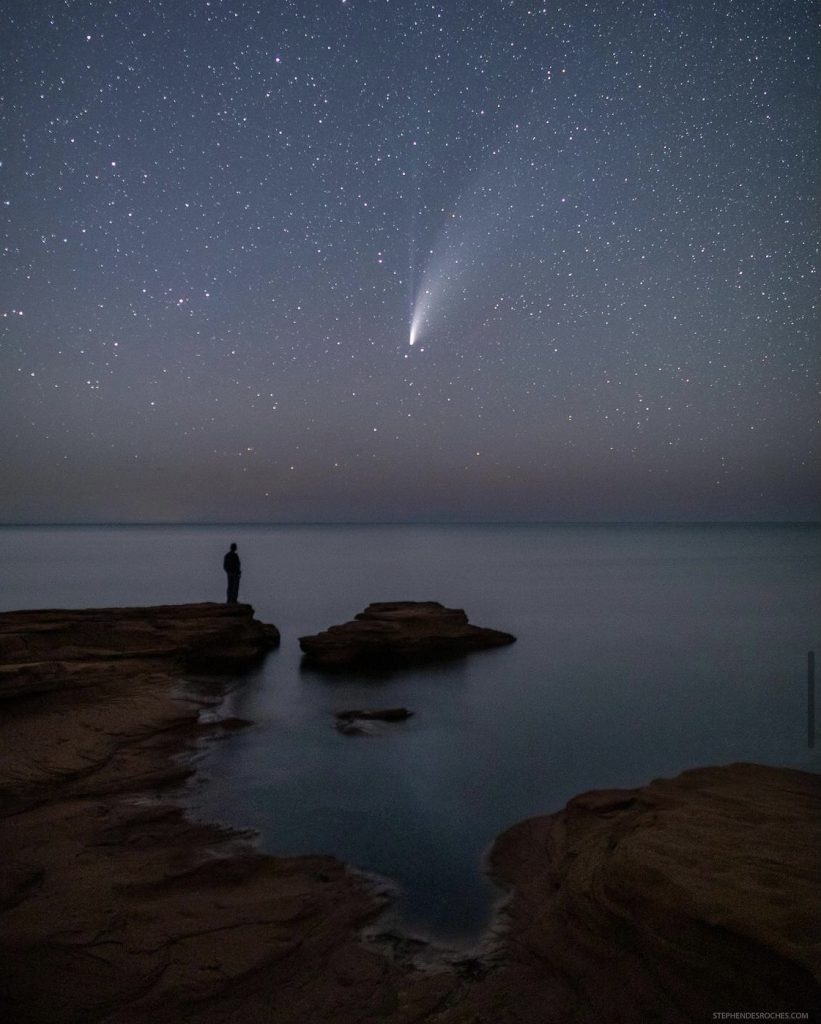
1. Cavendish Beach National Park
Choosing your observing site will make a big difference to what you can see. Houses, tall buildings, and trees reduce the amount of sky you can see. Light pollution coming from nearby streetlights, pubs, shops, and neighbours’ security lights, can take even more of your view away. If this is the case, get away from all that. Head out of town to a dark spot in the countryside. What better place to stargaze than at the beach?
2. Cavendish Grove, PEI National Park
Once you are all set up, you’ll need to give your eyes time to get used to the darkness. Astronomers call this process ‘dark adaptation’ and after your eyes have relaxed, opened up their pupils to take account of the reduced light levels and released special chemicals to enhance their sensitivity, you won’t believe how many more stars you can see than when you first arrived. Tip! Leave your phone at home! Its bright screen will ruin your night vision.
3. North Rustico Beach
Once your eyes have adapted, you will notice that the sky is full of stars, many more than you ever see with just a glance from a light-polluted site. Most stars are an icy white colour, but after adapting your eyes, you will make out that some are more of a bluish colour while others are yellow, orange or even red. This is because the stars have different temperatures! Stars aren’t just different brightnesses or colours. Some are smaller than our Sun, others are much larger, but those differences aren’t apparent to our naked eye. It won’t take you long to notice that the stars can be joined up to form patterns.
4. Brackley Beach
After a while, you will almost certainly see a star dash across the sky; a meteor or shooting star! These are tiny grains of space dust burning up in the atmosphere. Very bright ones, called fireballs, can drop meteorites on the ground. Satellites look like faint stars and move much more slowly, taking a minute or more to cross the heavens. The largest satellite, the International Space Station (ISS), can shine as brightly as Venus as it sails across the sky.
5. Montgomery Park
If you stay at your observing site long enough, you’ll notice that the stars which were low in the east when you arrived have cklimbed higher in the sky, and those which were low in the west are lower or might even have vanished from view altogether. Why? It’s because as Earth rotates, the stars appear to sweep across the sky. Only one star stays still: Polaris, the Pole Star, which is aligned with Earth’s axis.
There’s an easy way to tell them apart: stars twinkle, planets don’t. This is because while stars are points of light, planets are tiny discs, so stars are affected more by the movement of the air, providing an answer to that often asked question, ‘why do stars twinkle?’.
No Telescope? No problem!
Book a stargazing package with our participating accommodation operators and telescopes are provided for you to use during your stay! View stargazing packages here.
You can search the App Store on your phone for one of these stargazing apps:
- SkyView Lite
- Night Sky
- Constellation Map Mobile
- Solar Walk Lite – Planetarium
Happy Stargazing 💫


